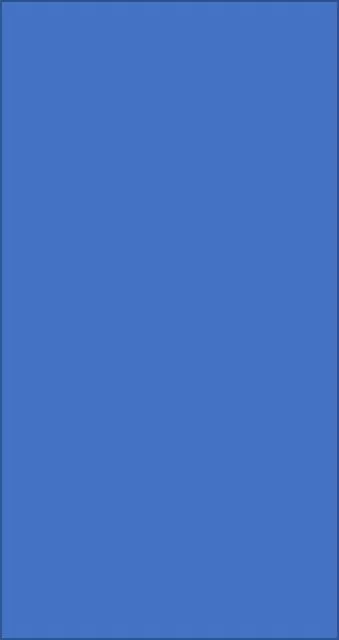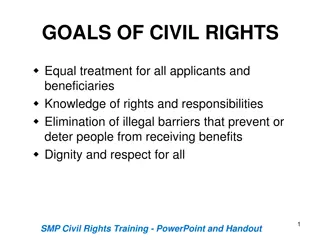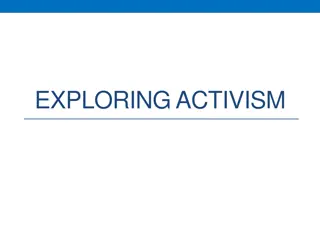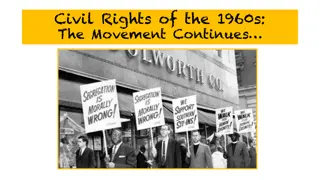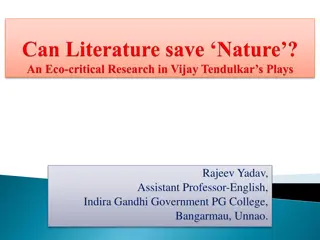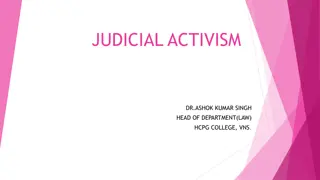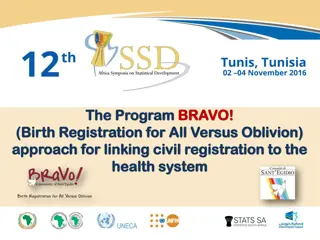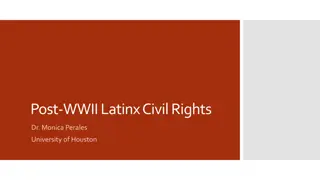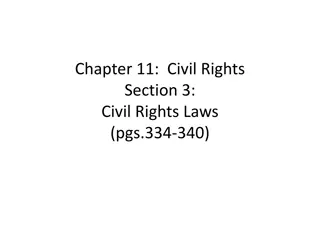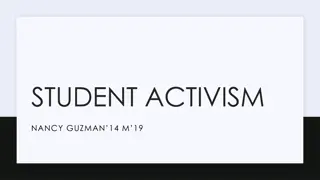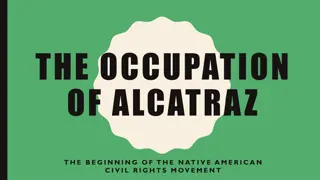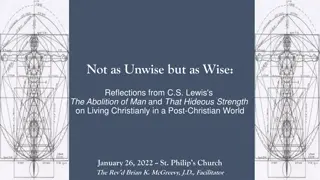Journey of John Lewis: From Birth to Civil Rights Activism
Born in 1940 in Alabama, John Lewis grew up on a farm, where he developed a deep connection with nature and a sense of responsibility. As he navigated the challenges of segregation, Lewis was inspired by leaders like Dr. Martin Luther King Jr. and events like the Montgomery Bus Boycott. The tragic death of Emmett Till and Rosa Parks' refusal to give up her seat ignited Lewis's activism, setting him on a path towards becoming a prominent figure in the Civil Rights Movement.
Download Presentation

Please find below an Image/Link to download the presentation.
The content on the website is provided AS IS for your information and personal use only. It may not be sold, licensed, or shared on other websites without obtaining consent from the author.If you encounter any issues during the download, it is possible that the publisher has removed the file from their server.
You are allowed to download the files provided on this website for personal or commercial use, subject to the condition that they are used lawfully. All files are the property of their respective owners.
The content on the website is provided AS IS for your information and personal use only. It may not be sold, licensed, or shared on other websites without obtaining consent from the author.
E N D
Presentation Transcript
Feb. 21, 1940 We lived on 110 acres in Pike County, Alabama. My father bought it for $300. Cash. It was every penny my father had to his name, money earned by tenant farming John Lewis is born, the son of Black sharecroppers near Troy, Alabama.
1945 I was always drawn to the chickens. No one else could tell those chickens apart and no one cared to. I knew every one of them by appearance and personality. John Lewis s main responsibility on the family farm was to take care of the chickens.
1951 Stopping for bathroom breaks took careful planning. Uncle Otis knew which places along the way offered colored bathrooms and which we were safer to just pass on by. John s uncle Otis took him on his first trip North from Alabama, to Buffalo, New York.
1954 I was so excited. Surely everything was going to change. Come fall I d be at a state-of-the-art school, an integrated school! But, not everybody was so excited. In Brown v. Board of Education, the Supreme Court declares that segregated schools are unequal and unconstitutional.
1955 One Sunday in early 1955 I was listening to the radio when I heard a sermon by a young preacher from Atlanta. Dr. King s message hit me like a bolt of lightning. He applied the principles of the church to what was happening now, today. It was called the social gospel and I felt like he was preaching directly to me. John Lewis heard a sermon by Dr. Martin Luther King Jr. on radio for the first time.
August 1955 In August an incident occurred which no one could ignore. The body of 14-year-old Emmett Till was pulled from bottom of the Tallahatchie River. The day before as he left the money country store, he said Bye, baby, to the white woman behind the counter. The next day he was dead. Emmett Till was a fourteen-year-old African American boy from Chicago visiting family in the South. He was tortured and killed in Money, Mississippi after allegedly insulting a white woman.
December 1, 1955 My family didn t know Rosa Parks but knew plenty of women like her. More than a few wives and mothers from [Pike] my home county did domestic work in Montgomery. Rosa Parks refused to move to the back of the bus and was arrested. This propelled the Montgomery Improvement Association (MIA) led by Dr. King, to start a boycott of buses in Montgomery.
March 26, 1958 Jim Lawson conveyed the urgency of developing our philosophy, our discipline, our understanding of non-violence. His words liberated me. I thought, this is it This is the way out. John Lewis, now a college student, attends his first workshop on non-violence activism led by Jim Lawson, from a pacifist group (F.O.R. Fellowship of Reconciliation) which was committed to the philosophy and discipline of non-violence.
Fall 1959 Segregation of the downtown stores bothered us the most. We could shop there and pay the same prices as white customers, but we couldn t use the dressing rooms or sit at the lunch counters to eat. It was humiliating. Lewis partakes in lunch counter sit-ins in downtown Nashville, Tennessee to protest segregation in downtown businesses.
February 27, 1960 We wanted to change America to make it something different, something better. There were so many of us to arrest that as they drove us off to jail, we filled every paddy wagon the police had in Nashville. John Lewis first arrest. They went to jail singing We shall overcome... During the civil rights struggle, Lewis was arrested approximately 40 times.
1960 We must tap into our greatest resource. A people no longer the victims of racial evil who can act in a disciplined matter to implement the constitution. A group of student activists including Stokely Carmichael, and John Lewis found the Student Nonviolent Coordinating Committee (SNCC) to support voter education and to protest segregation.
March 1965 "To those that have said, 'be patient and wait,' we must say that we cannot be patient. We do not want our freedom gradually, but we want to be free now. We are tired, we are tired of being beaten by policemen. We are tired of seeing our people locked up in jail over and over again, and then you holler, 'be patient.' How long can we be patient? We want our freedom, and we want it now." Lewis and Hosea Williams lead an estimated 600 voting rights marchers out of Selma on the way to Montgomery. After crossing the Edmund Pettus Bridge, Lewis is beaten by an Alabama state trooper suffering a fractured skull. He spends two days in a hospital. The violent attacks were recorded and disseminated throughout the country, and the images proved too powerful to ignore. "Bloody Sunday" as the day was labeled, sped up the passage of 1965's Voting Rights Act.






